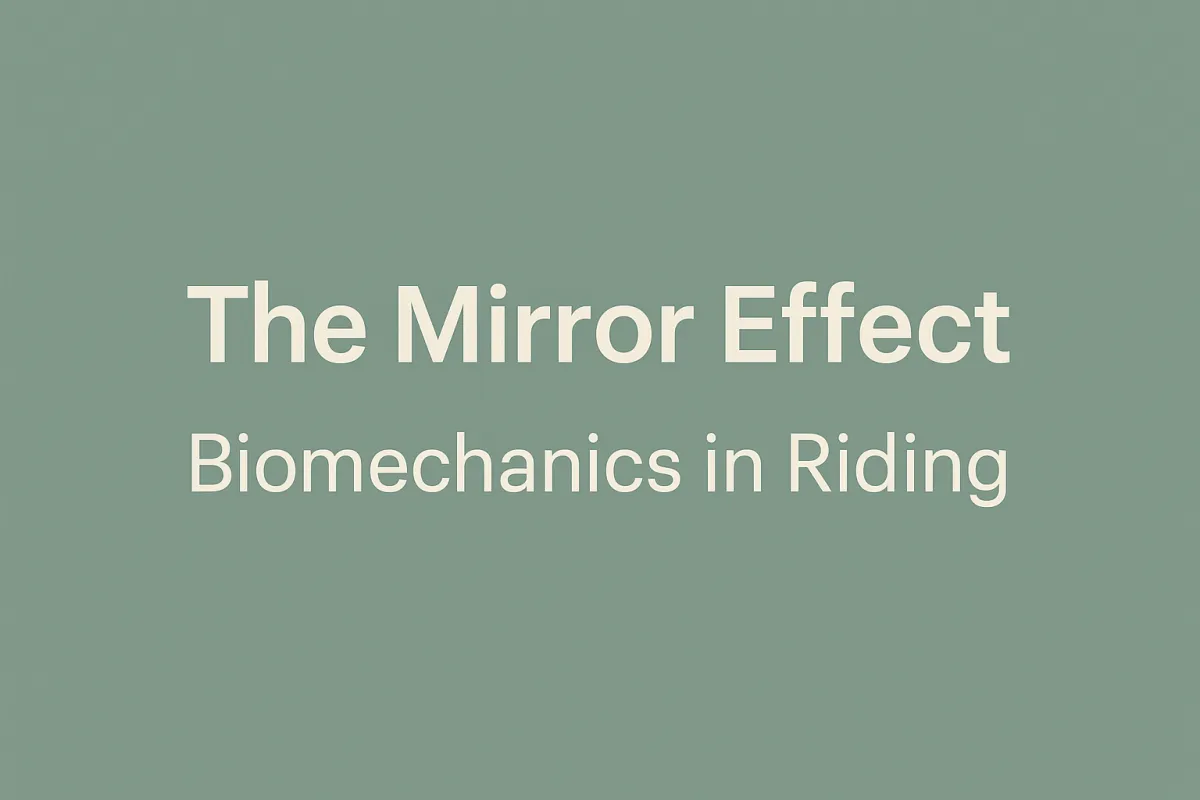
The Mirror Effect: How Our Body Shapes Our Horse’s Movement
The Mirror Effect: How Our Body Shapes Our Horse’s Movement
When we ride, every thought, shift, and movement in our body creates a picture for our horse. This “mirror effect” is the essence of biomechanics in riding: our body reflects into our horse’s body, and ideally, our horse mirrors us.
But here’s the truth—what we are striving for and what actually happens are often two very different things.
What We’re Striving For
At its best, riding is about lightness. Subtle cues, clear intention, and energy that flows seamlessly between rider and horse. Horses communicate through energy—not tack. Watch any mare and foal, and you’ll see the most profound lessons in leadership and connection. Our goal is to tap into that same language, so our horse responds as naturally to us as they do to another horse.
The Mind Comes First
It all starts in the rider’s mind.
Where do you want your horse to go?
What gait?
What shape should their body take?
Your thoughts and the energy behind them fuel the picture your horse perceives. Without structure, the horse seeks open doors and, like water, flows toward the path of least resistance. Too much brace, though, is just as harmful. We want to provide clear, guiding boundaries without rigidity.
The Rider’s Body as the Horse’s Body
Think of it this way:
Eyes: Direction of travel.
Shoulders: Mirror the horse’s shoulders.
Back: The horse’s back.
Hips: The horse’s hips.
Legs: Buttons that cue the horse’s legs (front button near the girth, middle button where your leg naturally hangs, back button just behind your hip for the hind legs).
Arms: The horse’s neck.
Hands: The horse’s nose, head, and front feet.
When these pieces align, the horse reads and reflects them with clarity.
A Circle Example
Take something simple—a left-hand circle. If your left shoulder is slightly back and your right shoulder slightly forward, your horse can bend softly into the shape. If your body twists the opposite way, your horse braces and the circle falls apart.
This alignment naturally shifts your seat, legs, and arms without overthinking: your outside leg supports, your inside seat directs and helps shape the circle, your outside hand provides perimeter contact, and your inside rein creates a lateral bend—all without pulling.
Common Pitfalls
Lack of structure – Eyes not aligned, body not engaged.
Disconnected arms – Hands and arms lose connection because the arm does not stay connected with the body's energy, breaking the line of communication.
Over-turning – Exaggerated shoulders or arms desensitize the horse, causing them to ignore subtle cues.
In each case, the rider misses the deeper tools: mind, energy, and body alignment. Hands and legs are secondary; the real power comes from within.
Why This Matters
The most inspiring horsemanship doesn’t come from reins and legs—it comes from connection. That’s why bridleless riders can shape piaffes, pirouettes, and lateral work with just their body and energy. They’ve mastered the mirror effect.
Try This Next Ride
As you ride, ask yourself:
Am I shaping my body the way I want my horse to move?
Am I guiding with my mind, energy, and subtle structure—or overusing hands and legs?
Does my horse look like a mirror image of me, or are we riding two different figures?
The mirror doesn’t lie. When you refine yourself, your horse reflects it beautifully.
Curious About Elevate?
If you’d like to dive deeper into your horsemanship journey, our Miles Made Elevate Membership might be the perfect next step. Just click here to learn more about Elevate!
